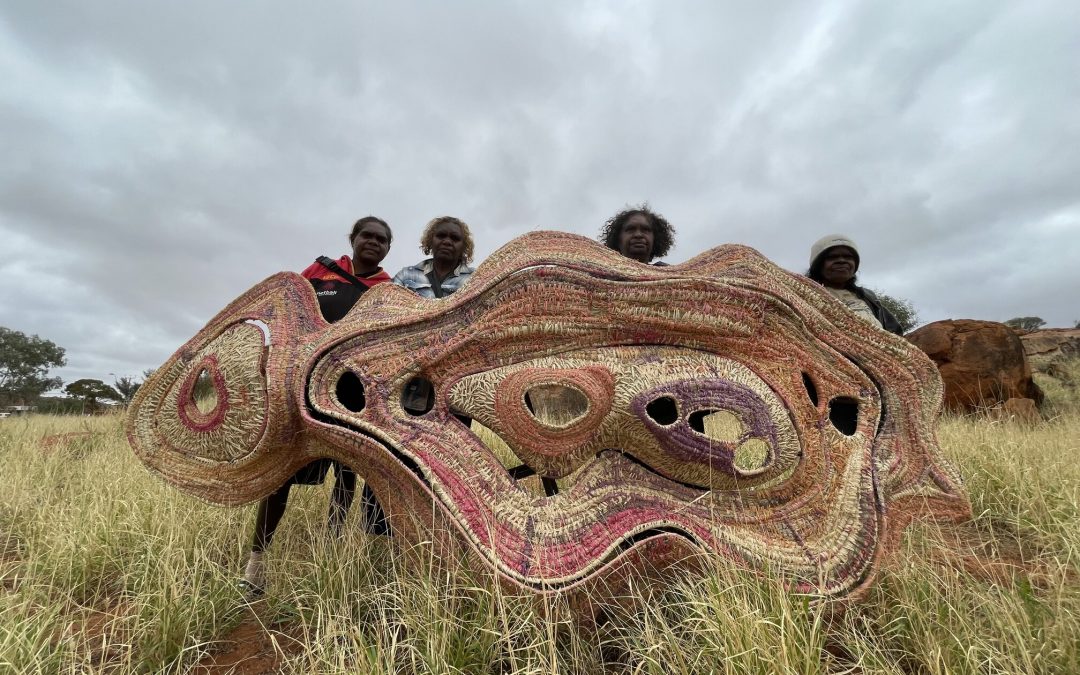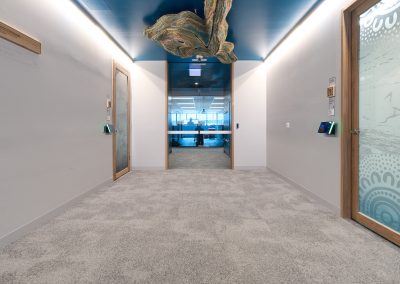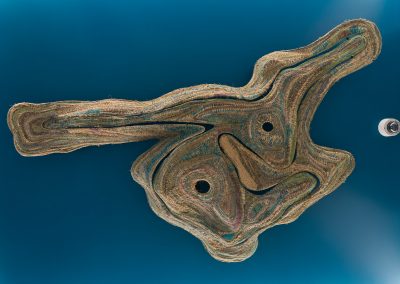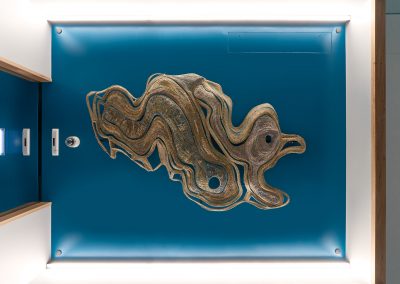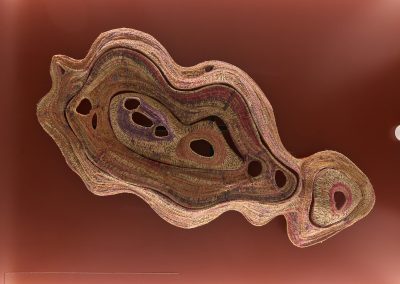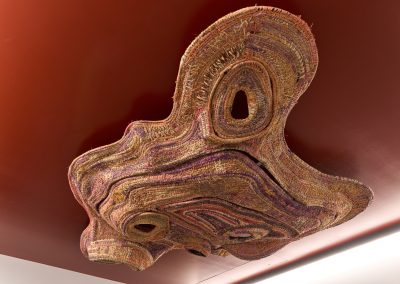Eliza Wangin, Pauline Wangin, Betty Mula and Harriet Bryant with their completed frame. Photograph courtesy Tjanpi Desert Weavers.
Working alongside Multiplex and Woods Bagot, and in consultation with the Department of Infrastructure and Transport’s Aboriginal Engagement team, the Department sought Guildhouse’s expertise in commissioning four public artworks for their new Pirie Street offices. With Guildhouse’s guidance and project management, the four large-scale woven sculptures were created by Tjanpi Desert Weavers. Tjanpi Desert Weavers are a social enterprise of the Ngaanyatjarra Pitjantjatjara Yankunytjatjara (NPY) Women’s Council, working with women in the remote Central and Western desert regions who earn an income from contemporary fibre art. Tjanpi (meaning grass in Pitjantjatjara language) represents over 400 Anangu/Yarnangu women artists from 26 remote communities on the NPY lands.
The woven sculptures are suspended from the celing thought the Department of Infrastructure and Transport. The weavings depicts the country and colours of the APY lands. The artworks are based on the many rock holes and rocks piles that are scattered across the landscape around Mimili and Indulkana.
The following Tjanpi artists were engaged:
Julie Yangki
Julie grew up in Mimili, South Australia.
She is a dedicated Tjanpi weaver, a strong cultural woman, and a superb traditional dancer. Julie makes distinctive, beautiful and highly sought after baskets featuring wangunu and minirri (native grasses), multi-coloured twined raffia and stitched emu feathers. Julie is a slow and steady weaver, taking her time to make well formed, strong baskets and sculptures.
Amy Yangki
Amy Yilpi is an artist belonging to the Pitjantjatjara language and cultural group and lives in the remote community of Mimili, South Australia.
Amy was born in Alice Springs, Northern Territory, but later returned to Mimili for schooling. She is the daughter of Julie Yangki, a dedicated Tjanpi weaver and a strong cultural woman in their home community. Amy continues to reside in Mimili with her husband Michael Butler and their three children.
As Amy’s husband is related to the Butler’s of Warakurna, Amy regularly travels there for extended periods of time. It was on one of these trip in 2018 that Amy began to learn to weave from her sister-in-law Ruth Bates. Very quickly, Amy became both an astute artist and business woman, producing a high volume of well-made, brightly-coloured animal sculptures. Prior to weaving, Amy has also been an accomplished painter and punu (wood) carver.
Pinuka (Margaret) Yai Yai
Pinuka Lives in Mimili Community and makes beautiful strong and thoughtful baskets.
Pinuka works with local grasses, coloured raffia and wool, weaving with great attention to detail and a refined technique. While she has only been weaving for a few years, Pinuka has already developed a distinct style based on her neat and considered weaving approach.
Rita Rolley
Rita Rolley is from Fregon on the Anangu Pitjantjatjara/Yankunytjatjara Lands in the far north-west of South Australia and brings to her artwork a strong connection with her traditional heritage.
Rita’s sense of place and independent personality shine through in her artworks which have a contemporary edge created through the use of colour and form while incorporating traditional cultural aspects.
Rita works across many artistic mediums including painting, prints, wood carving as well as Tjanpi weaving. Rita’s Tjanpi baskets and sculptures embody whimsy, humour and a unique creativity.
Aunty Ellen Trevorrow and Jelina Haines
Aunty Ellen Trevorrow and Jelina Haines produced five pieces of weaving artwork for the 83 Pirie Street office – on levels 4, 6, 8, 10 & 12.
Sheena Dodd
Sheena Dodd lives at Mimili Community on the APY Lands. Sheena’s mother is Margaret Ngilan Dodd and her father is Sammy Dodd.
Her mother’s country is associated with Ted’s Bore, near Sandy Bore, about 20 kilometres from the Mimili Community, and her father’s country is near Kenmore. Sheena is married to Richard Neilson and has five sons and one daughter.
Sheena commenced making baskets for Tjanpi Desert Weavers in 2010, then following a workshop held at Mimili in mid-2011 commenced making sculptures. In a very short time she has become highly skilled as a fibre sculptor, creating works that reveal her exceptional eye for form, shape and colour.
Sheena delights in creating a range of animals that catch her eye, not only those with which she is familiar from around the community and out bush, but also animals from afar. She captures the essential qualities of the birds and animals she creates in a highly expressive and entertaining way.
Kunmanara (Ngilan) Dodd
Kunmanara (Ngilan) Dodd was a Pitjantjatjara/Yankunytjatjara woman born at Teeta Bore.
She transitioned from living nomadically in her first years to working at Everard Park Station as a young woman, before it was returned to Aṉangu traditional owners. Alongside her husband Sammy, she remained one of the most knowledgeable songkeepers for Mimili community until her passing in 2023.
Kathy Dodd
Kathy Dodd is an artist belonging to the Pitjantjatjara language and cultural group and lives in the remote community of Amata, South Australia.
Kathy was born at Imanpa near Mount Ebenezer in the Northern Territory. Kathy is married to Sandy Dodd, the son of Margaret and Sammy Dodd from Mimili. Both of Kathy’s parents passed away when she was very young. Kathy has three children, two sons (one deceased) and a daughter.
Kathy began making baskets for Tjanpi in 2010, then following a workshop held at Mimili in mid-2011 commenced making sculptures. Her creative flair and skill as a sculptor soon became evident. Like so many of the Tjanpi weavers, Kathy has a wonderful eye for detail and is a keen observer of the natural world. Her expressive works reveal her great dexterity as a sculptor.
Fiona Dodd
Fiona is the daughter of Senior Artist Sheena Dodd, and has learned her craft from one of the best.
She has two little daughters herself and enjoys making baskets and animated faces on her animals. Fiona likes walking around on country, picking up the tjanpi grasses that grow not too far from Mimili community, sometimes she also goes and sits with her Aunty Margaret Dodd who is an expert basket maker and generally lovely company for an afternoon of weaving.
Rhonda Young
Rhonda Young is an artist belonging to the Pitjantjatjara language and cultural group and lives in the remote community of Mimili, South Australia.
Rhonda picked up her weaving skills from watching her family members make baskets and sculptures throughout her life. Taking part in Tjanpi weaving workshops in the past, Rhonda was excited to participate in the making of several large-scale sculptural pieces that were commissioned by Guildhouse in 2022.
Rita Norman
Rita Norman is an artist belonging to the Pitjantjatjara language and cultural group and lives in the remote community of Docker River, Northern Territory. She is a young weaver who began making baskets with Tjanpi in 2021.
Harriet Bryant
Harriet Bryant is an artist belonging to the Pitjantjatjara language and cultural group.
Harriet was born in Amata, South Australia, but later moved to the neighbouring community of Mimili with her husband. Her father is from spinifex area, around Tjuntjuntjara. Together with her husband, they have three children.
Harriet first learned to make Tjanpi by watching her Aunty Julie Yangki and Pinuka Yai Yai at Julie’s home in Mimili back in 2014. She started just watched and then the ladies helped teach Harriet – she now enjoys creating whimsical animal forms such as donkeys and kangaroos.
Harriet is known by Tjanpi staff as a ‘workshop guardian angel’. She is a bizz of energy, always helping the workshops run smoothly, making tea for the ladies, helping translate Pitjantjatjara to English, and making sure things are in order. Harriet also works as an arts worker for Mimili Maku Arts, both painting and supporting other artists to paint at the local art centre.
Pauline Wangin
Pauline was born in Indulkana on the APY Lands in the far northwest of South Australia. She grew up in the neighbouring community of Mimili.
Pauline started working at the art centre when it was first founded. For many years, Pauline was a dedicated artworker until she started focusing entirely on her painting practice in recent years. Her paintings resonate with a deep appreciation for the landscape and the stories that have created it, featuring elaborate detail and meandering pathways reflecting the intricate network of waterways on country.
Betty Mula
Betty Mula was born in Mparntwe (Alice Springs) in 1973 and was brought up by her mother in Imanpa. After attending school in both Imanpa and Mparntwe, Betty starting painting at Imanpa Craft Room.
One of Betty’s sisters lived in Mimili community at the time. When she passed away in the late 1980s, Betty came to Mimili community for Sorry Business. In Anangu culture, funeral rites can last for many weeks. While in Mimili Betty met her husband, Teddy Wangin.
Betty is a cheerful woman who spends most days in the art centre, but also has a wealth of knowledge for Country and its traditional foods. On the weekends, Betty can often be found out bush hunting for tinka (goannas) or maku (witchetty grubs).
Eliza Wangin
Eliza Wangin is a young woman belonging to the Pitjantjatjara language and cultural group and lives in the remote community of Mimili, South Australia.
She is the daughter of established Tjanpi weaver Pauline Wangin, who has gone on to shared these skills with Eliza. Having taken part in Tjanpi weaving workshops in the past, Eliza was eager to participate in the making of several large-scale sculptural pieces that were commissioned by Guildhouse in 2022.
Maringka Burton
Maringka was born near Wingellina and grew up in Ernabella community.
She went through school in Ernabella and spent most of her youth there. She later moved to Amata and then to Indulkana where she raised her family and still resides today.
Maringka is a mother and grandmother for lots of young kids. She is an artist of many mediums including Tjanpi weaving, painting canvas and beaded jewellery. Maringka is also a practising ngankari (traditional healer) and works with the NPY Women’s Council to provide traditional healing services.
“I am a senior lady at Iwantja, and I began working as an artist at Iwantja Arts a long time ago, me and Kunmanara Singer were the first women artists here. I help look after the art centre and go to the big meetings for them. I also enjoy singing and I travelled to sing in the opening ceremony of the Sydney Olympic Games, I want to keep painting and doing inma (ceremonial song and dance) always. My father was a special ngangkari (traditional healer) and he taught me about healing; now I am ngangkari too. I do lots of work for the women’s council, I’m always helping at their big meetings and supporting Anangu women. As artists and as a community, we should always do more work with the young people, making things together and teaching them about the old ways too, always remembering country, this is a good way.”
Nellie Coulthard
Nellie Coulthard was born in desert bush and near Oodnadatta, on the remote property of the Wintinna Homestead Cattle Station.
Her father worked as a shepherd for a local station, Nellie and her family travelled constantly and slept outdoors supporting her father and caring for the sheep. Nellie has two brothers and two sisters and has lived at the Indulkana community since she was a young lady.
Nellie has been making paintings at the Iwantja Art Centre for many years. Her work often speaks to memories and stories of the country she recalls as a young girl, they reference her childhood experiences of living in the country. An accomplished textile maker, Nellie’s structural pieces are created with extreme skill and finesse, she enjoys making unique baskets and abstract forms with tjanpi grasses and coloured wools.
Betty Chimney
Betty Chimney is a long-time artist and director of Iwantja Arts. A dedicated painter, Betty’s work is inspired by her ancestral Yankunytjatjara country and a determination to maintain her strong connection to country and culture.
In addition to her own painting practice, Betty works on large-scale collaborative paintings with her daughter Raylene Walatinna. Through the process of working together with her daughter on collaborative paintings, Betty continues the tradition of older women passing on their important knowledge of Tjukurpa (Anangu cultural stories) and Ngura (Country) to younger women
Daisy Barney
Daisy Barney was born near Mount Chandler near the Indulkana community. When she was a young girl, her family moved to live at the Iwantja creek. Daisy and her family would often hunt and venture out for bush foods such as Maku (Witchetty Grub) and Tjala (Honey Ant).
Her mother would make Nula Nula (clapping Sticks) and Piti (bowl) to sell to the travellers on the highway. Daisy would assist by burning the decorations into the wood with wire.
Daisy has worked at Iwantja Arts alongside her daughters, Dianne and Kunmanara (Kerry Ann) Robinson. Throughout her practice she has worked with a range of mediums, including woodwork, batik, and painting.
Sonia Bannington
Sonia Bannington is an young woman and artist belonging to the Pitjantjatjara language and cultural group. She was born in Mparntwe (Alice Springs), and presently lives in the remote community of Indulkana, South Australia. She often works with the local art centre, Iwantja Arts, while also creating Tjanpi baskets and sculptures in her spare time.
Priscilla Singer
Priscilla Singer is a senior Pitjantjatjara woman who lives at Indulkana in the APY Lands of SA. Priscilla is the daughter of Kunmanara (Sadie) Singer [1950 – 2014], who was a founding artist of Iwantja Arts, a strong leader and a pioneering woman on the APY Lands. She is the eldest of six siblings that include the artist Trish Singer. As well as a painter she is a teacher at the Indulkana School.
Priscilla completed her senior years of high school in Adelaide and has continued to train extensively through her role as an AEW (Anangu Education Worker) at the Indulkana Anangu School, where she has played a significant role in the school’s bilingual learning strategies and the integration of cultural activities into the school curriculum.
During her time working at Iwantja Arts, Priscilla has worked alongside her mother and other family members in the art centre across a wide range of mediums and techniques, including lino-cut, batik and painting. In recent years, Priscilla has established herself as an exceptional painter and a leader of women’s collaborative projects. She describes her painting as being about the family connections that are all important to Anangu (Aboriginal people of the area).
Raylene Walatinna
Raylene Walatinna is the daughter of Betty Chimney, a senior woman and established painter at IwantjaArts. Raylene’s artistic practice has been guided by the influence of her mother and in recent years Betty and Raylene have been working together on large-scale collaborative paintings.
Through the process of working together with her daughter on collaborative paintings, Betty continues the tradition of older women passing on their important knowledge of Tjukurpa (Anangu cultural stories) and Ngura (Country) to younger women.
Raylene is also a mother, and recently a grandmother and is proud to be continuing this important cultural tradition. Raylene’s paintings are informed by her family’s strong connection to country and their history (both their ancestral Yankunytjatjara cultural history and more recent family history) associated with the rugged desert country around Indulkana, on the APY Lands.
Ngila Mungkuri
Ngila Mungkuri is a Yankunytjatjara woman who lives in the remote community of Indulkana, South Australia. She is the daughter of Maisie King and the late Peter Mungkuri OAM, both respected senior cultural people and highly revered artists respectively.
Maxine Stewart
Maxine Stewart is a Pitjantjatjara and Yankunytjatjara woman who resides in the remote community of Indulkana in South Australia. She was born on her mother’s Country at New Crown Station, a cattle station not far from Finke in the Northern Territory. She is a strong basket weaver who has been weaving with Tjanpi Desert Weavers for well over a decade.
Betty Muffler
Betty was born in country near Watarru on the Emu country side (Yilaku) and grew up in the bush with her mother, father and brother. She now lives in Indulkana community.
Betty started painting for Iwantja Art centre and still works on large scale canvases that are exhibited throughout Australia, as well as making stunning and innovative baskets for Tjanpi. In 2017, Betty’s painting ‘Ngangkari Ngura’ (Healing Country) won the Emerging Artist Award at the Telstra NATSIAA Awards, and in 2021 her work was on the cover of Vogue Australia.
Betty’s baskets emulate the painterly look of a canvas, with intuitive colour choices, disappearing lines, movement, and strength. Betty weaves with any stitches, slowly building her forms over long periods of time.
Betty is a highly respected Ngangkari (traditional healer) and has worked in hospitals in Adelaide, Coober Pedy, Whyalla and Alice Springs.
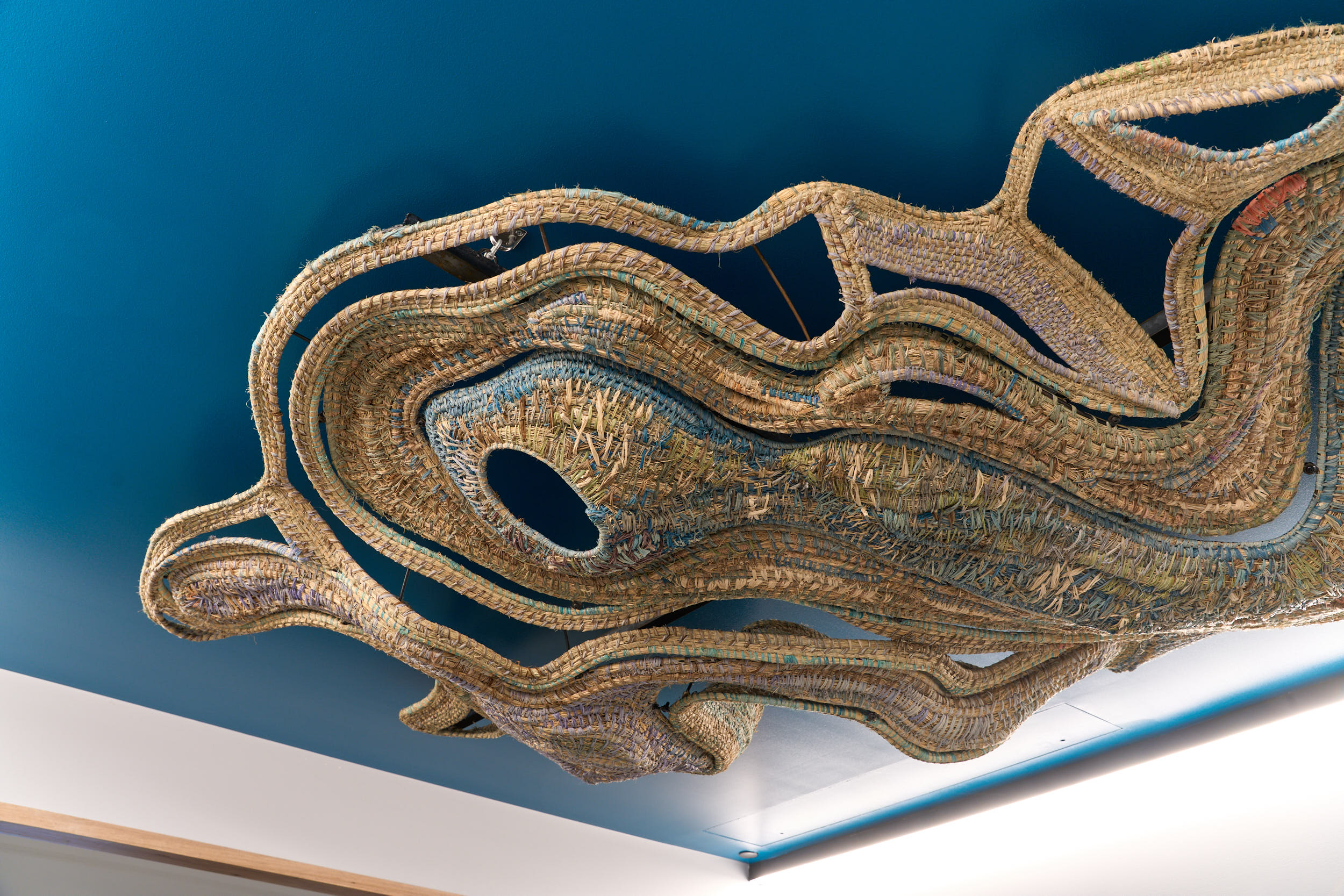
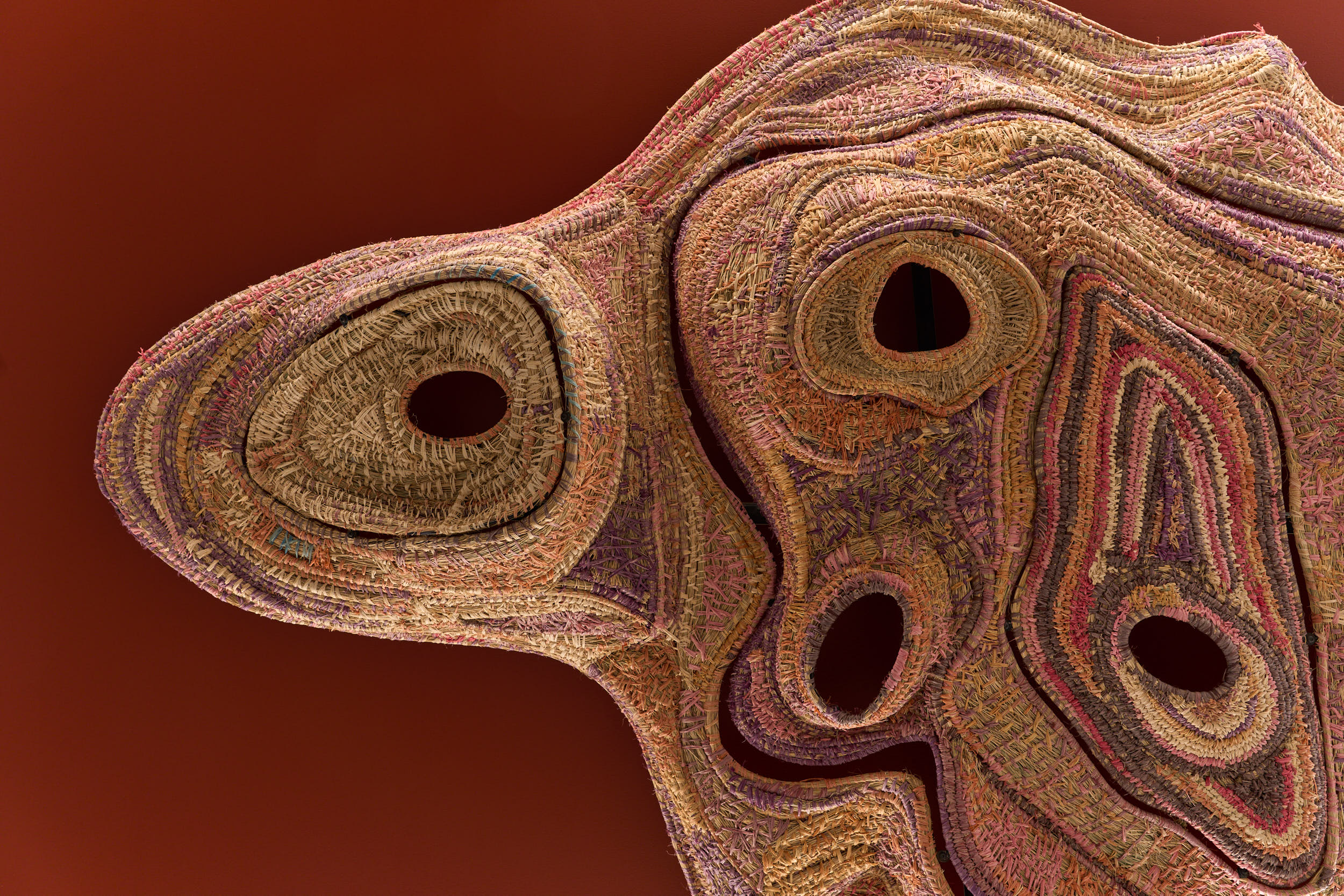
Photograph Sam Roberts
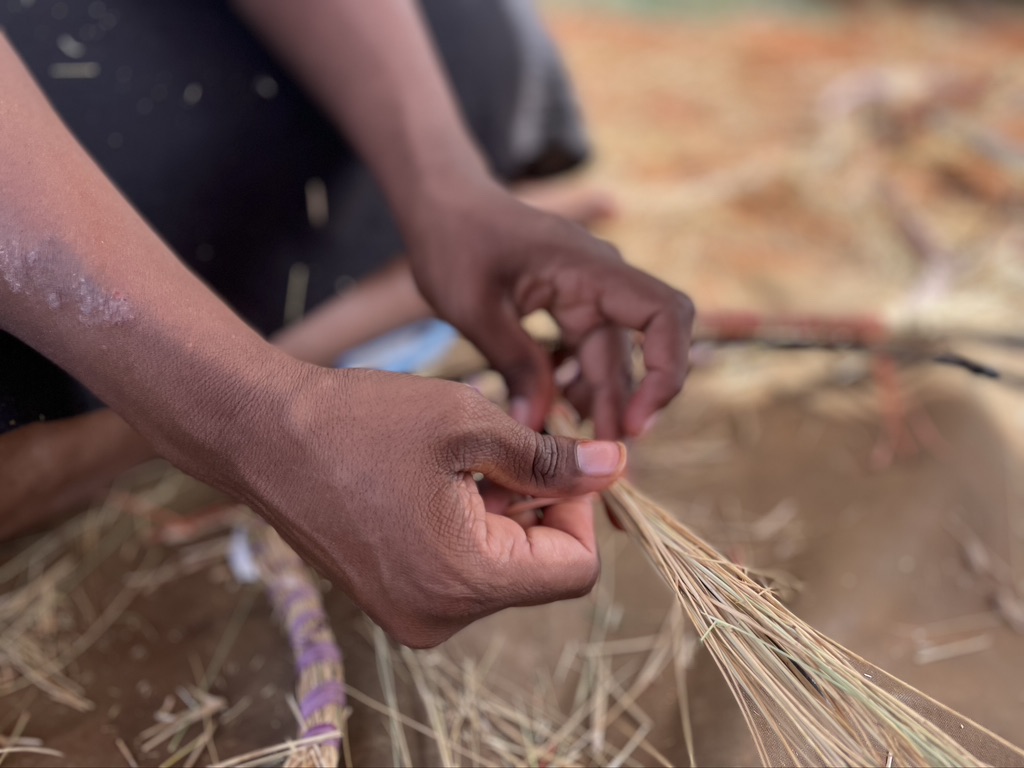
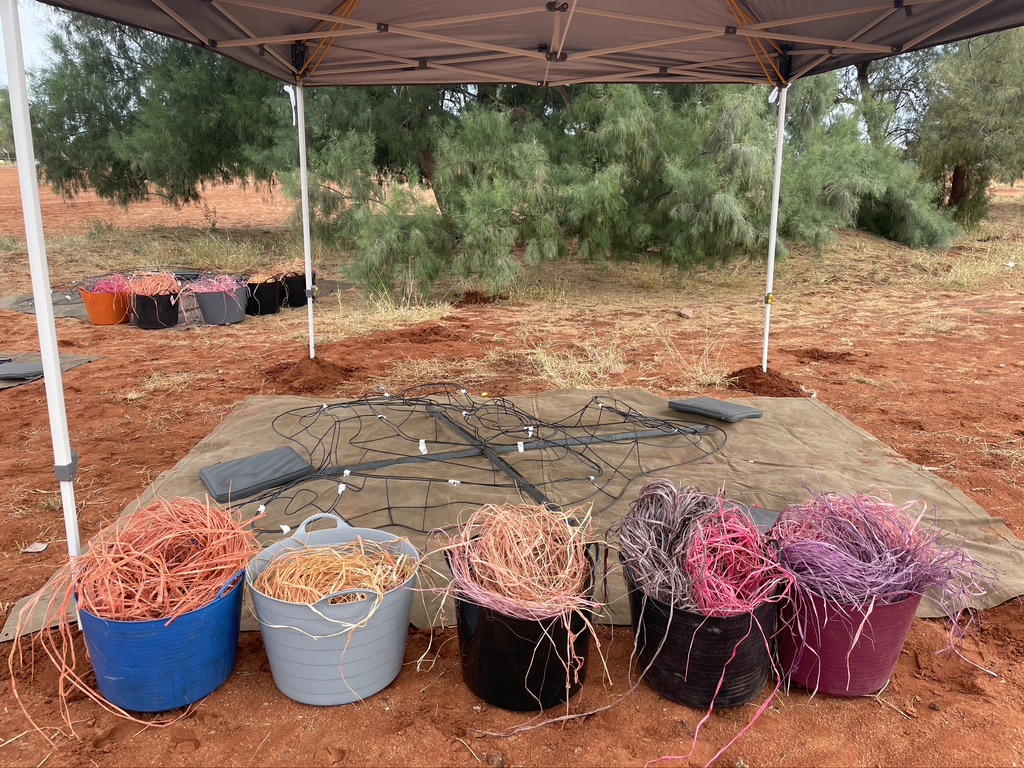
Guildhouse Professional Services
Harness South Australian creative excellence.
Guildhouse offers a range of customisable professional services to support organisations and individuals to engage with South Australia’s exceptional artists, craftspeople, and designers.
As the peak industry body for professional visual art and contemporary craft in South Australia, Guildhouse has contributed to a vibrant artistic community for over 59 years. We are trusted for our deep understanding of artistic practice, sector knowledge, unique networks and a highly experienced team. Guildhouse works with over 1200 artists from diverse artistic practices.

